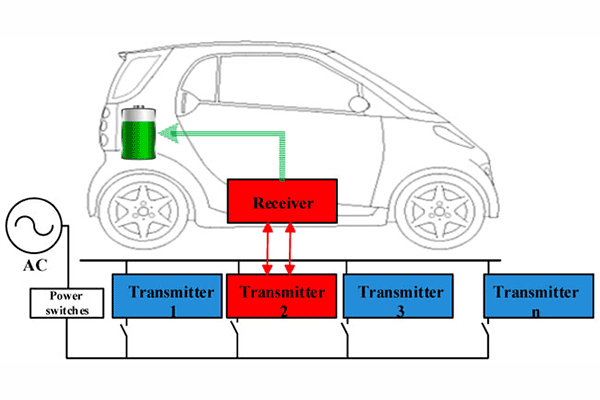Commercial vehicles are electrified faster than passenger cars because they tend to have fixed routes or relatively fixed distances and specific roles, so they are often the “first movers” in the electrification of vehicles in various countries. This article briefly introduces the four main electric commercial vehicle energy transfer methods.
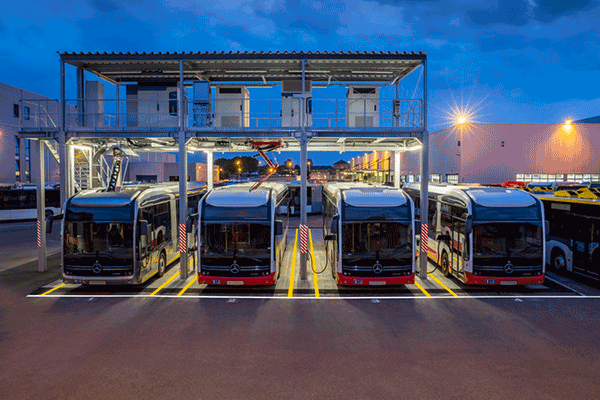
1. Wired charging method
The most familiar and popular charging methods we have today are with wires, which is the more traditional way of conduction, and I have classified them according to several important definitions.
1.1 They can be divided into four categories according to charging mode.
- Level 1 – slow charging from a regular power outlet (single-phase or three-phase), which takes a very long time
- Level 2 – slow charging from a conventional socket, but with a protective box on the cable
- Level 3 – Slow or fast charging with specific connectors with control and protection features (e.g., SAE J1772 and IEC 62196)
- Level 4 – Fast charging with some unique charger technology (e.g., CHAdeMO), i.e., DC charging
1.2 Charging Standard
There are currently three mainstream charging standards worldwide: CHAdeMO, CCS, and GB/T. The communication protocols are divided into two camps, CAN communication and PLC communication.
1.3 Physical interface classification
- EC62196/2: Type1, Type2, Type3 (AC slow charging)
- IEC62196/3: AA, BB, EE, FF (DC fast charging)
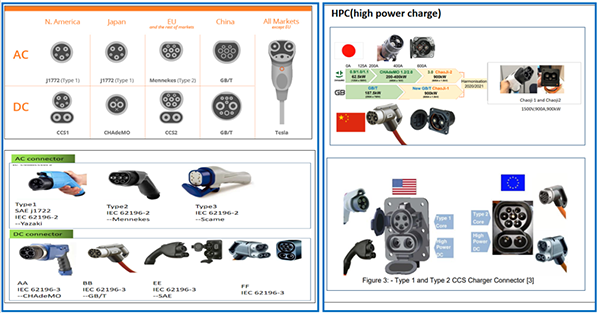
2. EV pantograph charging technology
The mainstream pantograph charging method is only SAE SAE J-3105, the standard according to different voltage and current, divided into 2 levels, and the 2 levels are compatible. Its wireless communication protocol is based on IEEE 802.11n, the 2 levels of different power meet the fast charging needs of BUS and TRUCK.
- Level 1: up to 600 A (350 kW)
- Level 2: up to 1200 A (1.2 MW)
The standard is divided into 3 types according to the different connection methods.
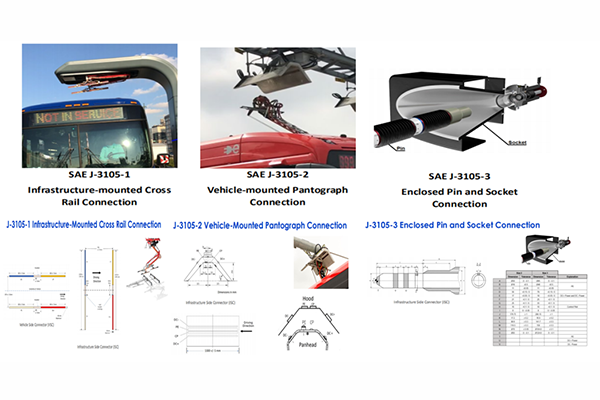
3. Battery Swapping
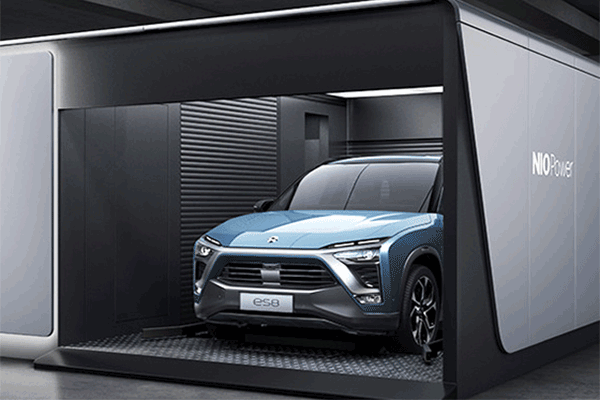
The idea of battery swapping is ancient. The first known company to offer battery swaps was the General Vehicle Company (GeVeCo), founded in 1912 by General Electric and the Hartford Electric Light Company. The company provided a subscription-based battery-swapping service for trucks. In 1924 the service was shut down due to corporate troubles and the ascent of the gasoline-powered truck.
For battery-swapping to work best, standardization may seem important. But it is also extremely difficult. It is not like standardizing a plug, a device that you add at the end of a cable. A battery is an integral part of an electric car. To fully standardize battery swapping, you’ll need a similar sort of batteries, of similar size, of similar weight, located in the same place in a vehicle, with the same cooling system, with the same connectors, with the same-size hatch, and with the same hatch-connectors. Try that out!
4. EV Wireless Power Charging
Thanks to great scientist Nikola Tesla for his limitless amazing inventions in which wireless power transfer is one of them. Basic principle of wireless charging is same as transformer working principle. In wireless charging there are transmitter and receiver, 220V 50Hz AC supply is converted into High frequency alternating current and this high frequency AC is supplied to transmitter coil, then it creates alternating magnetic field that cuts the receiver coil and causes the production of AC power output in receiver coil. But the important thing for efficient wireless charging is to maintain the resonance frequency between transmitter and receiver. To maintain the resonant frequencies, compensation networks are added at both sides. Then finally, this AC power at receiver side rectified to DC and fed to the battery through Battery Management System (BMS).
Based on the application, Wireless charging systems for EV can be distinguished into two categories.
4.1 Static Wireless Charging
As the name indicates, the vehicle gets charged when it remains static. So here we could simply park the EV at the parking spot or in garage which is incorporated with WCS. Transmitter is fitted underneath the ground and receiver is arranged in vehicle’s underneath. To charge the vehicle align the transmitter and receiver and leave it for charging. The charging time depends on the AC supply power level, distance between the transmitter & receiver and their pad sizes.
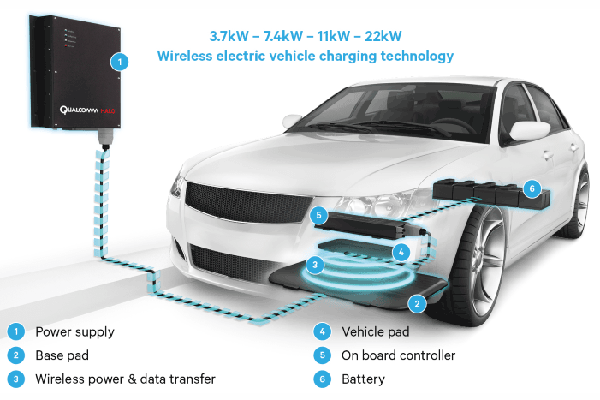
4.2 Dynamic Wireless Charging System (DWCS)
As the name indicates here vehicle get charged while in motion. The power transfers over the air from a stationary transmitter to the receiver coil in a moving vehicle. By using DWCS EV’s travelling range could be improved with the continuous charging of its battery while driving on roadways and highways. It reduces the need for large energy storage which further reduce the weight of the vehicle.
